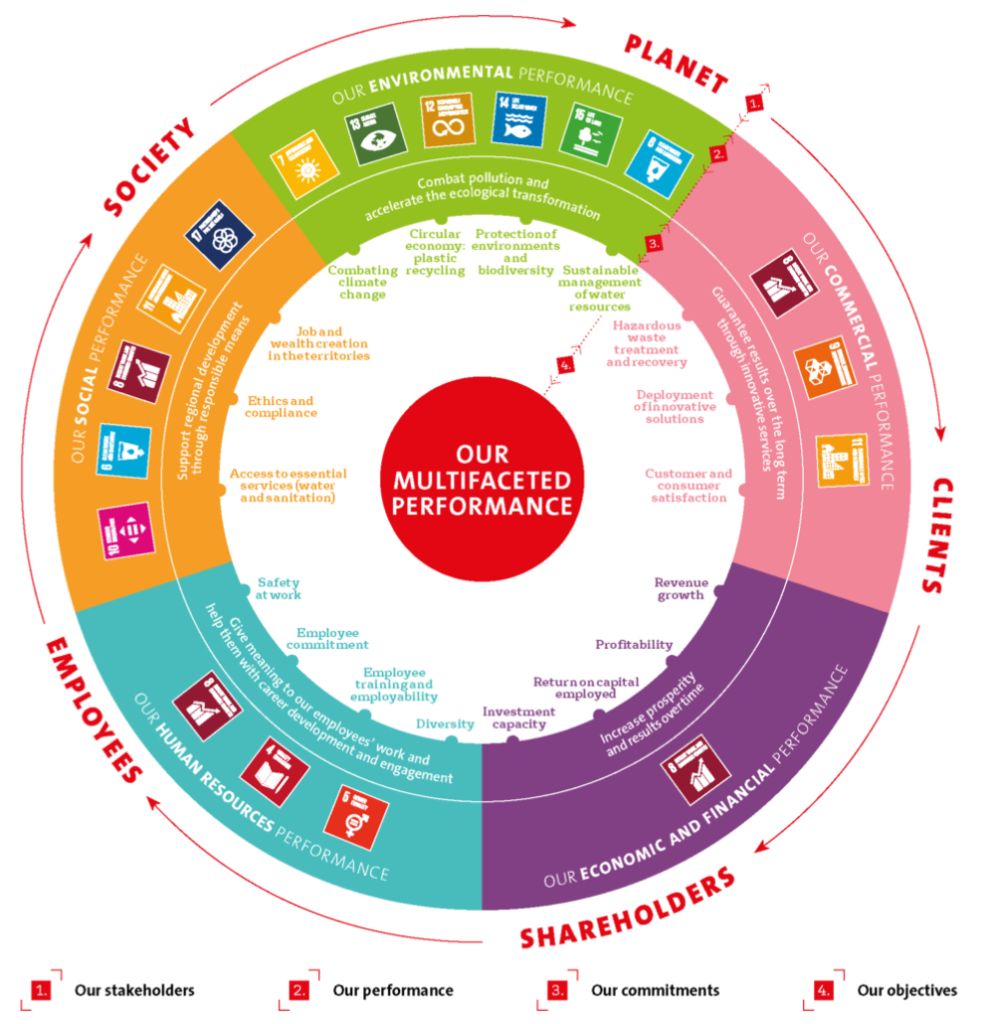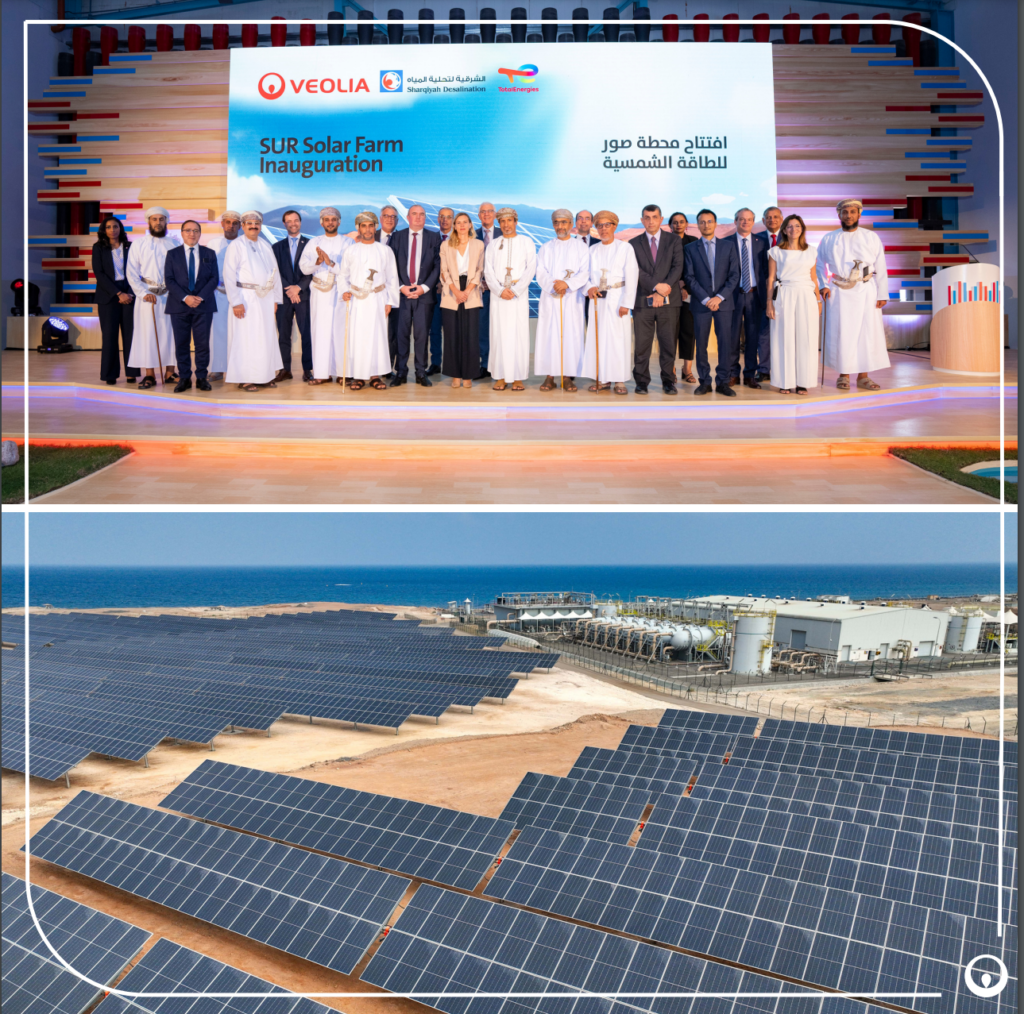
Close

We lower our impact on the environment wherever possible. Our desalination facility uses 40% less energy compared with conventional plants and the methods used during the process means that chemical pre-treatment is not needed, ensuring minimal impact on the marine and coastal ecology.
To assess our impact on the marine environment further, we carried out a study into the local fish communities. The study measured the number of tropical fish species in the test site close to the plant compared to two representative control sites nearby. The results identified 82 species of tropical fish and coral reef species in the test site around the brine discharge complex, compared to the two control sites nearby which rarely exceed eight species due to the poor environment not offering any shelter.
This concentration of species, across the whole food chain, in such a small area can be contributed to the rocky bottom that was blasted in order to lay the intake and brine discharge pipes for the plant. The rock creates shelters for species and larvae, acting as an artificial reef.
we addresses several key environmental concerns through its operations and initiatives, which include reducing greenhouse gas emissions, conserving water resources, promoting waste management and recycling, protecting biodiversity, improving air quality, and contributing to sustainable urban development. The company works on these concerns through its various environmental initiatives and services.
Our purpose is to contribute to human progress by firmly committing to the Sustainable Development Goals set by the UN to achieve a better and more sustainable future for all. It is with this aim in mind the task of “Resourcing the world” through its environmental services business.
In terms of performance, we seek to achieve not only financial and commercial success but also social and environmental results. The company believes that these three aspects are interdependent and that sustainable development can only be achieved by addressing all of them.

On 6th November 2023, the Minister of Energy and Minerals, Sultanate of Oman, inaugurated the 17-megawatt peak (MWp) solar photovoltaic (PV) farm in Sur, Oman. This solar farm will provide green energy to power the Sur Desalination Plant, which is considered the largest solar system for a desalination plant in Oman. The solar PV farm, developed in collaboration with Veolia and TotalEnergies, is a significant milestone towards the region’s decarbonisation efforts. With an annual capacity of over 32,000 megawatt-hours (MWh) of green electricity, the solar plant will cover 100% of the desalination plant’s consumption during daylight hours.
The implementation of the solar PV farm will contribute towards reducing carbon dioxide (CO2) emissions in the region. It is estimated that the plant will cut approximately 27,200 tons of CO2 emissions per year, which is equivalent to the emissions generated by around 6,000 internal combustion engine-powered vehicles over the same period.
The construction of the solar plant commenced in August 2022 and underwent thorough testing from 30 March 2023 to 15 April 2023. Following successful testing, the commercial operation was achieved on 16th April 2023. The lease agreement for the solar farm operation is valid until 31st March 2036, ensuring long-term sustainability. About 25M KWh has been generated in the last three quarters of 2023, equating to a reduction in carbon emissions of 22k tons.

The environmental aspects at SDP are regularly measured by external third parties and internal monitoring schedules. These measurements are compared and evaluated against applicable legal standards. The ambient noise levels at all locations are within the limits set, and workplace noise levels meet the standard of 85 dB (A), except for the RO building and HP Pumps(1). In high-noise areas, appropriate personal protective equipment (PPE) such as earplugs and earmuffs are mandatory, and signage is posted in areas where sound levels exceed limits.
Dust emissions at ambient locations comply with the Oman Provisional Standards of 125 mg/m3 and the USEPA NAAQS of 150 mg/m3. Within the plant area, dust emissions at workplaces are well below the OSHA standard of 5,000 mg/m3. The concentration of pollutants such as Oxides of Nitrogen (NOx), Sulphur dioxide (SO2), Ozone (O3), and Nitrogen dioxide (NO2) in the ambient air along the boundary wall of the Sur Desalination Plant area is monitored and found to be within regulatory standards.
The company has developed a biodiversity footprint tool to assess the impact of its activities on natural environments and biodiversity. A study conducted in 2021 identified 15 actions to be implemented at the Sur Plant site. Some actions have been carried out internally, while others require external expertise. As a result, the company signed a Memorandum of Understanding with the University of Sur Technology & Applied Science (UTAS) in 2023 for collaboration. A survey was conducted by UTAS on November 16, 2023, where the campus was systematically combed, and detailed images of biodiversity were captured. Experts then analysed the images to confirm plant species and identify invasive or endangered species. Further progress will be made in the year 2024.